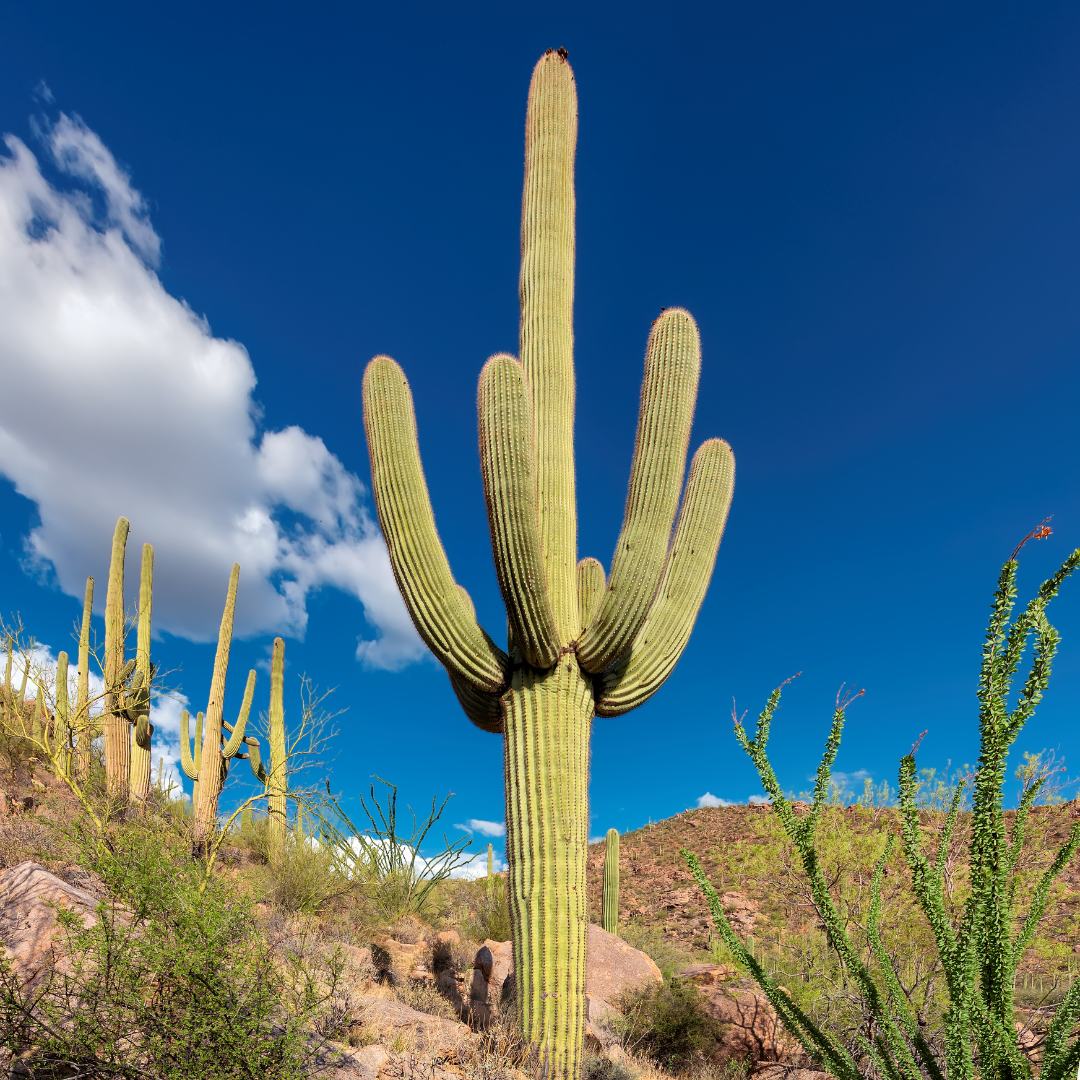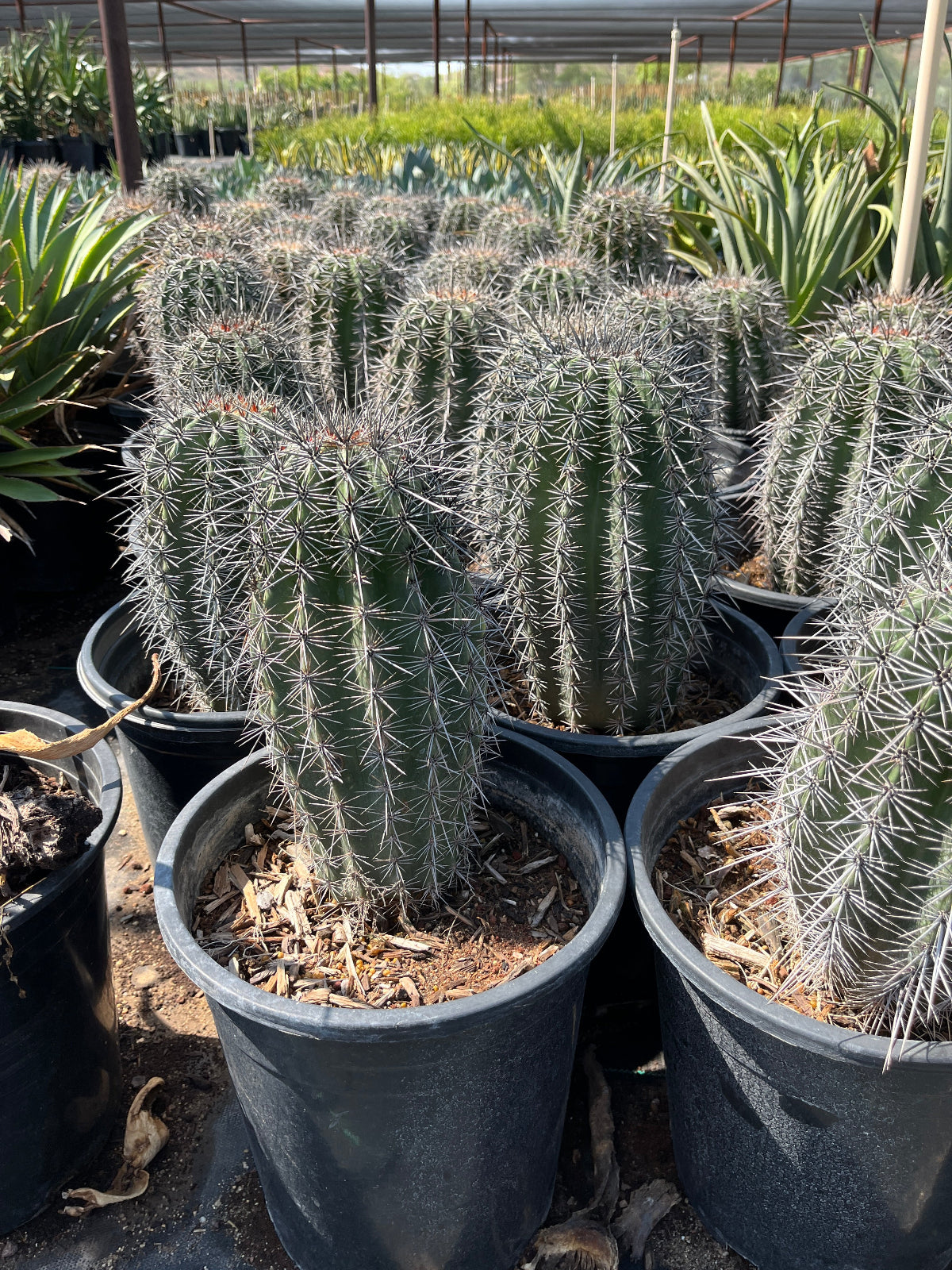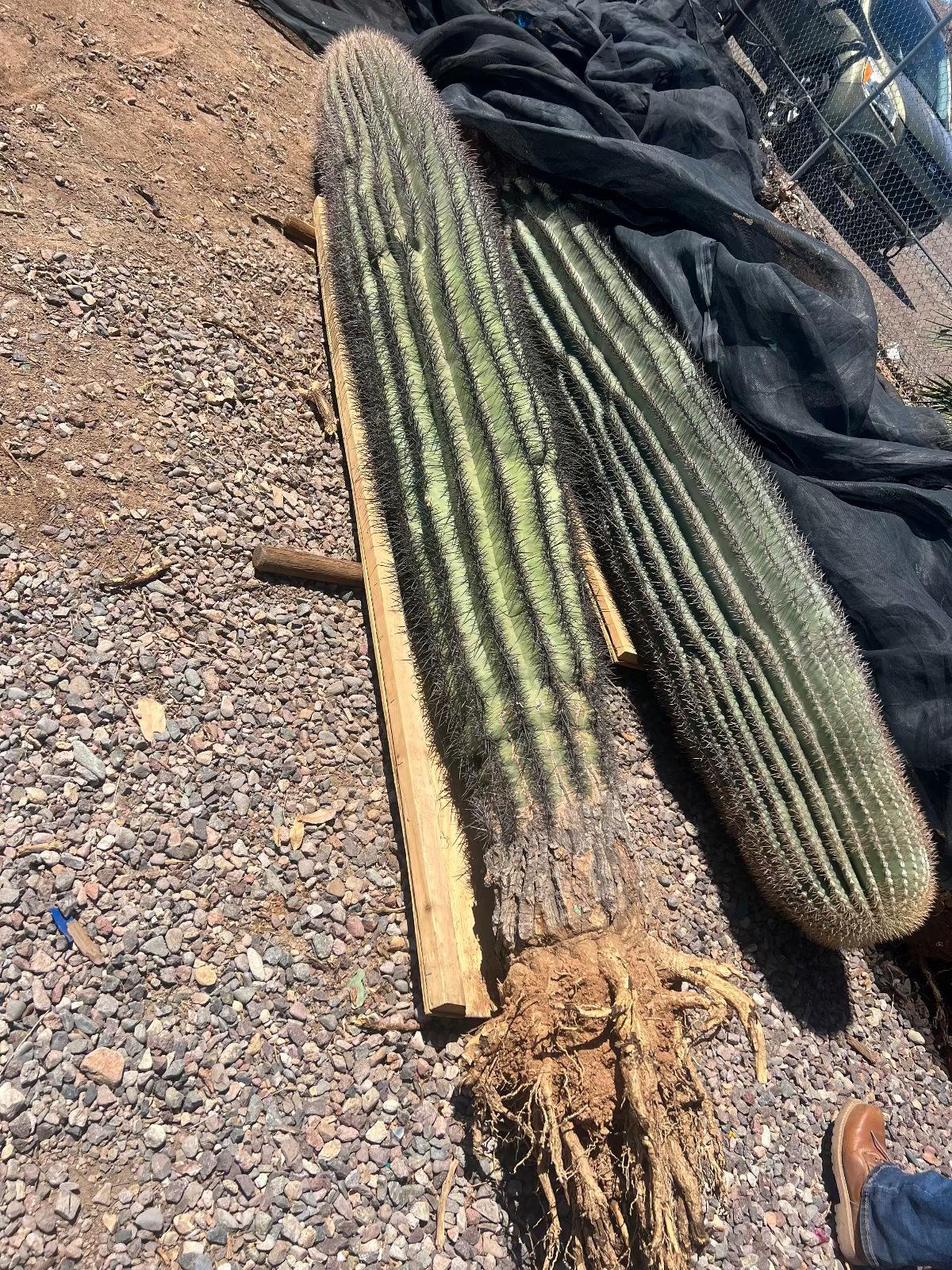My Store
Saguaro
Saguaro
Couldn't load pickup availability
Plant Type: cacti
Plant Height: 30-50 feet
Spread: 10-15 feet
Flower Color: white
Sun Exposure: Full Sun
Carnegiea gigantea (Saguaro Cactus) – The Icon of Arizona’s Desert Landscape
The Carnegiea gigantea, commonly known as the Saguaro cactus, is an iconic symbol of the Arizona desert and a majestic presence in the American Southwest. Renowned for its massive size, longevity, and dramatic silhouette, the Saguaro is an essential part of Arizona's natural beauty.
Key Features of the Saguaro Cactus:
- Towering Columnar Stem: The Saguaro cactus is characterized by its tall, columnar stem, which can reach heights of up to 60 feet or more. The cactus has a ribbed structure, allowing it to expand and store water during the rainy season, helping it survive through extended droughts.
- Iconic Arms: As the Saguaro matures, it develops its signature arms or branches, which often grow upward and can take on various shapes. Each Saguaro has a unique form, adding to the plant’s dramatic visual appeal against the desert sky.
Perfect for Arizona's Arid Climate
The Saguaro cactus is perfectly adapted to the arid climate of Arizona, making it a staple of desert landscapes. Its ability to thrive in full sun and well-drained soil makes it a low-maintenance plant for xeriscaping or desert-themed landscapes.
- Minimal Maintenance: Saguaro cacti require minimal watering once established, relying on their ability to store water in their stems to survive long droughts. The primary concern is protecting these valuable plants from physical damage or vandalism, as they are a protected species in many areas.
- Desert Ecosystem Support: The Saguaro plays a critical role in the desert ecosystem, providing shelter and nesting sites for various wildlife, including birds, bats, and other desert creatures. In late spring and early summer, the bright white flowers attract pollinators such as bees and birds, further supporting the desert's biodiversity.
Why Choose a Saguaro Cactus for Your Arizona Landscape?
- Drought Tolerance: Saguaro cacti are perfectly adapted to Arizona’s desert climate, making them ideal for low-water-use landscapes such as xeriscaping. Once established, they require minimal care and thrive in full sun.
- Cultural and Natural Symbolism: The Saguaro is not just a plant; it is a cultural icon and a symbol of the American Southwest. Its towering presence, unique arms, and long lifespan make it a revered feature of Arizona landscapes.
- Long-Lasting Beauty: Saguaro cacti take decades to reach their full height and can live for over a century, adding timeless beauty and natural authenticity to your garden.
Growth and Care
The Saguaro cactus grows slowly, often taking decades to reach its mature height. It prefers well-drained, sandy soil and should be planted in areas with full sun exposure. Once established, the cactus requires minimal watering and can survive long droughts by storing water in its stem. Though the plant is highly resilient, be mindful of its protected status, as damaging or removing Saguaro cacti is prohibited in many areas.
Planting & Care Tips
The Saguaro cactus thrives in full sun and well-drained soil. Water sparingly, allowing the cactus to absorb moisture during rainy periods, and ensure that the plant is protected from physical damage. This low-maintenance cactus is an excellent addition to Arizona gardens, providing height, structure, and a connection to the desert ecosystem.
The Saguaro cactus (Carnegiea gigantea) is an iconic feature of Arizona’s desert landscapes, known for its towering height, unique arms, and cultural significance. Its drought tolerance, low-maintenance care, and role in the desert ecosystem make it a highly valued addition to xeriscaping and desert gardens in Arizona.
Three Timbers Installation Guide (Feel Free to Follow): Saguaro
Planting Guide:
- Location: Full sun (at least 6 hours of direct sunlight for optimal growth)
- Soil: Well-drained, sandy or rocky soil (slightly acidic to neutral soil preferred)
- Spacing: Space plants at least 10-12 feet apart to allow for their large, upright growth
- Planting Depth: Plant at the same depth as the root ball, ensuring the top of the root ball is level with the surrounding soil surface
- Support: Saguaro is a self-supporting cactus and requires no staking
Watering Guide:
Watering After Planting:
- Initial Watering: Water thoroughly immediately after planting to saturate the root ball and surrounding soil
- Frequency: Water every 7-10 days for the first 2-3 weeks to help establish the root system
- Watering Amount: Provide 3-4 inches of water per session for deep watering
When is the Plant Established?
- Timeframe: Saguaro is considered established after 6-8 months when the roots have spread into the surrounding soil
Watering Once Established:
- Summer: Water every 14-21 days during the hotter months. If temperatures exceed 100°F, increase watering to every 10-14 days. Provide 2-3 inches of water per session.
- Winter: Water every 6-8 weeks during the cooler months, depending on rainfall.
Drip Irrigation Setup:
- Placement of Emitters: Place the drip emitters 18-24 inches away from the base of the plant for deep watering
- Flow Rate: Use emitters with a flow rate of 1-2 gallons per hour
- Number of Emitters: 1 emitter per plant for even watering distribution
- Adjusting Frequency: In summer, increase watering frequency to every 10-14 days. In winter, reduce to every 6-8 weeks
Share
















